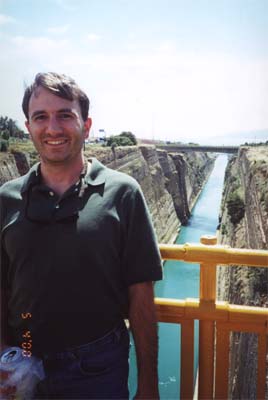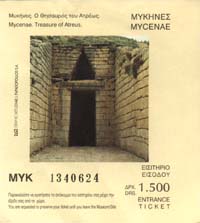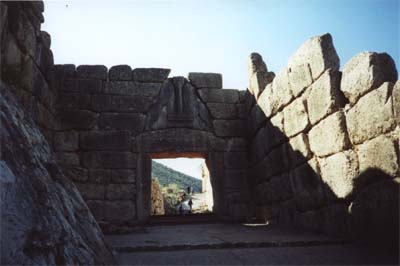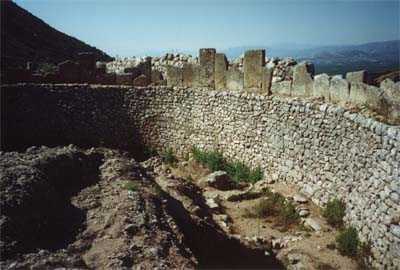  |
| We picked up our tiny rental car in the Athens
airport, and set out for the Pelopennisan peninsula. We
immediately got lost in Athens. Just when we figured out where we
were, we passed the Budget office, so we knew where to return
the car when we got back to Athens.
Here's Paul in front of our Renault Clio. He said that it was fun
to drive, even though the engine was less than half the size of our cars
back home. |
 |
|
 
Our first stop on our way to Nafplion was the
Corinth canal. The canal was built by the French in late 1800s,
making the Pelopennesian peninsula into an island. It's about 4 miles
long, and only 30 yards wide.
We stopped at the canal for a few minutes, then continued south toward
Nafplion. |
 |
 |
|
| We arrived in Nafplion in the
afternoon and checked in to our hotel. We went to a restaurant on
the harbor for lunch, and then fell asleep for the rest of the day and
night (the 10 hour time change caught up to us). In the morning, we
set out for a full day of visiting ancient sites.
|
|
 
Our first stop was Mycenae. According to Homer,
Mycenae was the home of Agammemnon, who led the Greeks in the Trojan
War. The city went into decline around 1100 BC, and five hundred
years later the classical Greeks speculated that the town must have
been built by the Cyclopes.
|
 |
| We entered the ancient city through the
Lion Gate. |
When Mycenae was first excavated in the late
1800s, archaeologists found 14 kilograms of gold here, including what
they thought was Agemmemnon's funeral mask (now in the National
Museum in Athens, and believed to be much older than than
Agemmemnon). |
 |
 |
 |
Kimberly in front of the Treasury of Atreus
(just before a busload of German tourists showed up). It was probably
built around 1300 BC. |



